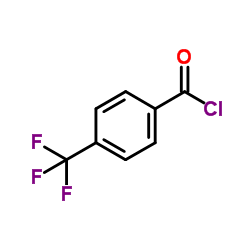| Description |
SR1078 is an agonist of retinoic acid receptor-related orphan receptor α/γ (RORα/RORγ).
|
| Related Catalog |
|
| Target |
RORα/γ[1]
|
| In Vitro |
SR1078 is a synthetic RORα/RORγ ligand. SR1078 modulates the conformation of RORγ in a biochemical assay and activates RORα and RORγ driven transcription. Furthermore, SR1078 stimulates expression of endogenous ROR target genes in HepG2 cells that express both RORα and RORγ. In a cell-based chimeric receptor Gal4 DNA-binding domain-NR ligand binding domain cotransfection assay, SR1078 significantly inhibits the constitutive transactivation activity of RORα and RORγ, but has no effect on the activity of FXR, LXRα and LXRβ. In a RORα cotransfection assay, treatment of cells with SR1078 (10 μM) results in a significant increase in transcription. Similarly, in the RORγ cotransfection assay, SR1078 treatment results in a stimulation of RORγ-dependent transcription activity[1].
|
| In Vivo |
The pharmacokinetic properties of SR1078 are examined in mice and noted significant exposure. Plasma concentrations reach 3.6 μM 1h after a 10 mg/kg i.p. injection of SR1078 and sustained levels of above 800 nM even 8h after the single injection. These levels are sufficient to perform a proof-of-principle experiment to determine if SR1078 treatment would stimulate ROR target gene expression in an animal model. Mice are treated with SR1078 (10 mg/kg i.p.) and 2h after the injection the livers are harvested and mRNA purified for assessment of G6Pase and FGF21 gene expression.T he expression of both FGF21 and G6Pase is significantly stimulated by SR1078 treatment vs. vehicle control[1].
|
| Kinase Assay |
The ALPHA screen assays are performed. Assays are performed in triplicate in white opaque 384-well plates under green light conditions (<100 lux) at room temperature. The final assay volume is 20 μL. All dilutions are made in assay buffer (100 mM NaCl, 25 mM Hepes, 0.1% (w/v) BSA, pH 7.4). The final DMSO concentration is 0.25% (v/v). A mix of 12 μL of GST-RORγ-LBD (10 nM), beads (12.5 μg/mL of each donor and acceptor), and 4 μL of increasing concentrations (210 nM-50 μM) of compound SR1078 are added to the wells, the plates are sealed and incubated for 1h. After this preincubation step, 4 μL of Biotin-TRAP220-2 peptide (50 nM) is added, the plates are sealed and further incubated for 2h. The plates are read on PerkinElmer Envision 2104 and data analyzed using GraphPad Prism software[1].
|
| Cell Assay |
HEK293 cells are maintained in Dulbecco's modified Eagle's medium (DMEM) supplemented with 10% (v/v) fetal bovine serum at 37°C under 5% CO2. HepG2 cells are maintained and routinely propagated in minimum essential medium supplemented with 10% (v/v) fetal bovine serum at 37°C under 5% CO2. In experiments where lipids and sterols are depleted, cells are maintained on charcoal treated serum (10% (v/v) fetal bovine serum) and treated with 7.5 μM lovastatin and 100 μM mevalonic acid. 24 h prior to transfection, HepG2 or HEK293 cells are plated in 96-well plates at a density of 15×103 cells/well. Transfections are performed using LipofectamineTM 2000. 16 h post-transfection, the cells are treated with vehicle or SR1078. 24 h post-treatment, the luciferase activity is measured using the Dual-GloTM luciferase assay system. The experiments are repeated at least three times[1].
|
| Animal Admin |
Mice[1] Plasma levels of SR1078 are evaluated in C57BL6 mice (n=3 per time point) administered by i.p. injection. After 1, 2, 4, and 8h blood is taken. In the 2h time point liver is taken for target gene analysis. Plasma is generated using standard centrifugation techniques, and the plasma and tissues are frozen at −80°C. Plasma and tissues are mixed with acetonitrile (1:5 (v/v) or 1:5 (w/v), respectively), sonicated with a probe tip sonicator, and analyzed for drug levels by liquid chromatography/tandem mass spectrometry.
|
| References |
[1]. Wang Y, et al. Identification of SR1078, a synthetic agonist for the orphan nuclear receptors RORα and RORγ. ACS Chem Biol. 2010 Nov 19;5(11):1029-34.
|



